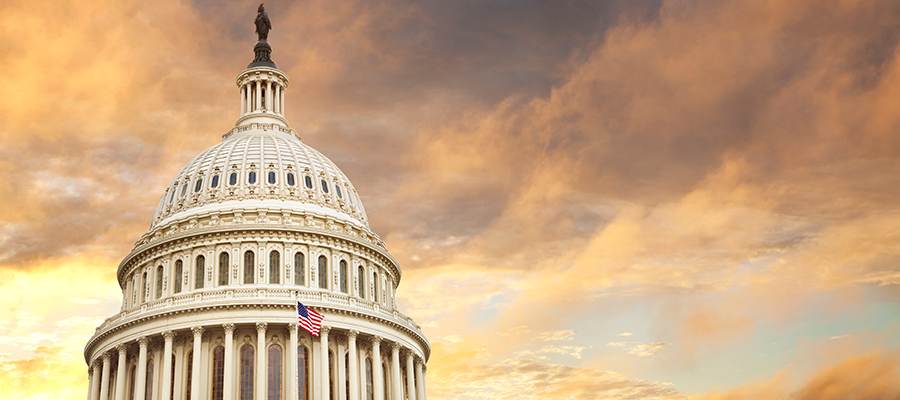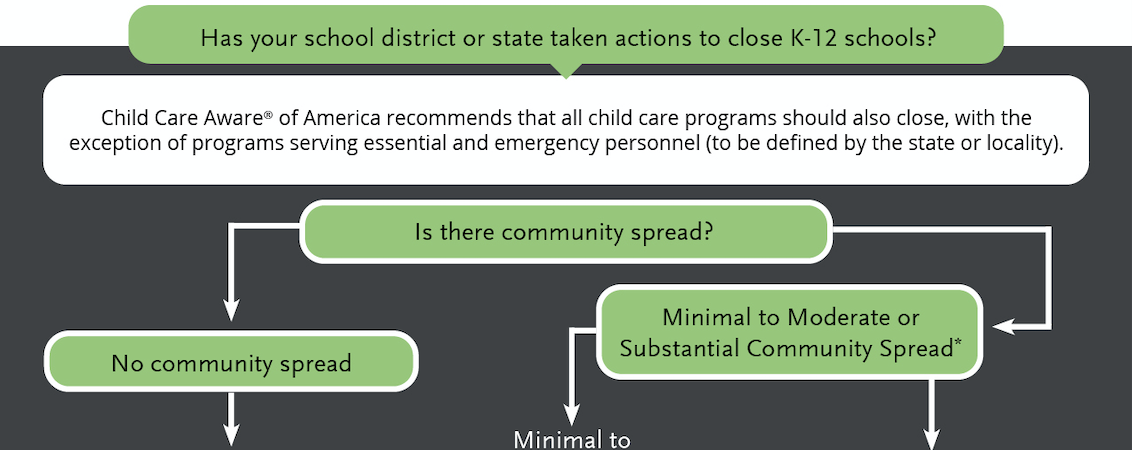
Updated March 27, 12:50 p.m.
With all the news and updates around the novel coronavirus (COVID-19), it can be difficult to grasp the proposals put forward by Congress. Below you will find a summary of each proposal passed or under consideration so far:
1) Coronavirus Preparedness and Response Supplemental Appropriations Act, 2020 (H.R. 6074)
Status: Signed into law on March 6.
Details: The first federal response to the novel coronavirus focused provided $8.3 billion in emergency funding. Focusing primarily on the health response, a large portion of this funding was directed to federal, state, and local health agencies for prevention and mitigation.
In addition, this legislation opened nearly $7 billion in low-interest, Small Business Administration (SBA) loans for some businesses impacted by the pandemic. While loans may not be a sustainable solution for many child care providers, you can learn more about the program from the SBA.
2) Families First Coronavirus Response Act (H.R. 6201)
Status: Signed into law on March 18.
Details: The second response package aims to support vulnerable workers and families affected by the coronavirus, including important expansions to nutrition programs, Medicaid, and provide free testing for COVID-19. The law also provides Emergency Paid Sick Leave and expansion of the Family and Medical Leave Act (FMLA) to cover some paid leave for some workers.
The Emergency Paid Sick Leave provided by this bill includes the following provisions:
Who is eligible?
- Employees at companies with fewer than 500 employees.
- Local, state, and federal government employees.
- Health care providers and emergency responders may elect to exclude their workers from this requirement. The Secretary of Labor has authority to issue regulations to exclude certain employers from eligibility, including those with fewer than 50 employees whose business’ viability would be jeopardized.
What are they eligible for?
- Eligible full-time employees and part-time employees can receive paid time off to seek a diagnosis or to comply with a recommendation or order from a public official or health care provider on the basis that the physical presence of the employee on the job would jeopardize the health of others because of the exposure of the employee to coronavirus or exhibition of symptoms of COVID-19 by the employee.
- To care for a family member for the same reasons described above
- These employees can also receive some wage replacement for care for a family member or to care for a child whose school or child care provider has closed due to COVID-19.
The Emergency Family and Medical Leave Expansion provided by this bill includes the following provisions:
Who is eligible?
- Workers employed by an employer with fewer than 500 employees, who have been employed with their employer for at least 30 calendar days.
- Health care providers and emergency responders may elect to exclude their workers from this requirement. The Secretary of Labor has authority to issue regulations to exclude certain employers from eligibility, including those with fewer than 50 employees whose business’ viability would be jeopardized.
What are the eligible for?
- Workers can access this public health emergency leave only if they are unable to work (or telework) due to a need for leave to care for a son or daughter under 18 years of age if the school or place of care has been closed or unavailable due to a public health emergency related to coronavirus.
- The leave provided will be unpaid for the first 10 days, and workers may substitute any accrued vacation, personal, medical, or sick leave. After the first 10 days, eligible works must receive at least 2/3 wage replacement, up to a limit.
Who pays for the emergency paid sick leave and family leave?
- Employers initially front the cost of emergency paid sick leave.
- The federal government will reimburse the cost within three months.
- Employers will be reimbursed through a refundable tax credit each quarter that counts against employers’ payroll tax payments.
You can learn more about these provisions from A Better Balance: https://www.abetterbalance.org/resources/federal-coronavirus-proposal-the-families-first-coronavirus-response-act-h-r-6201/
As the federal government provides updates on how to implement these provisions, CCAoA will post the relevant information on our coronavirus update webpage: https://info.childcareaware.org/coronavirus-updates
3) Coronavirus Aid, Relief, and Economic Security (CARES) Act (H.R.748)
Status: Signed into law on March 27.
Details: To date the largest coronavirus response package, this $2 trillion measure includes dedicated child care funding, expanded Unemployment Insurance, new Small Business Administration grants and loans, and individual assistance, in addition to support for our health care system.
The law includes a $3.5 billion increase to the Child Care and Development Block Grant (CCDBG). This funding is intended to help states maintain child care operations and support first responders and health care workers. States may spend CCDBG funds on the existing purposes under the law, including supporting Child Care Resource and Referral (CCR&R) Agencies, and may also use the funds for the following:
- Payments to providers, even in cases of decreased enrollment, to ensure they remain open or reopen when supported;
- Payments to providers to pay salaries or wages to child care staff;
- To provide child care to essential personnel without regard to income eligibility; and
- To provide cleaning and sanitation assistance to all providers.
The law also includes financial supports that can help the child care sector workforce, including:
Small Business Supports:
- Paycheck Protection Program: $350 billion worth of Small Business Administration (SBA) loans for businesses and nonprofits. The program would provide 8 weeks of cash-flow assistance through 100 percent federally guaranteed loans to small employers who maintain their payroll during this emergency. If the employer maintains its payroll, then the portion of the loan used for covered payroll costs, interest on mortgage obligations, rent, and utilities would be forgiven.
- Economic Injury Disaster Loans: Expanded eligibility to the SBA’s Economic Injury Disaster Loans (EIDL) for businesses to keep their doors open and pay their employees.
- Emergency Grants: Allows businesses that apply for an EIDL expedited access to capital through an emergency grant— an advance of up to $10,000 within three days to maintain payroll, provide paid sick leave, and service other debt obligations.
More information on the grants and loans is available from the Small Business Administration.
Unemployment Insurance Expansion:
The bill substantially expands unemployment insurance to those unable to work due to the novel coronavirus. This includes self-employed and part-time workers. For workers who are furloughed, laid off, or find themselves without work through no fault of their own because of the COVID-19 pandemic and our public health response to it, they will now have access to their usual calculated benefit plus an additional $600 per week in compensation. This expansion lasts through July 31, 2020,
More information on the UI expansion is available from the National Employment Law Project.
Stimulus Paychecks:
The bill also provides stimulus checks to American households, with qualifying individuals receiving $1,200. In addition, households would receive an extra $500 for every child age 16 and under.
Learn more about both the stimulus paychecks and expanded Unemployment Insurance.
As the federal government provides updates on how to implement these provisions, CCAoA will post the relevant information on our coronavirus update webpage.
What’s Next for Congress
While the dedicated funding for child care is welcome, it is much lower than the $50 billion requested by advocates and the sector. As a result, CCAoA is urging Congress to provide robust, direct aid to the child care system to ensure it can provide support our health care, emergency and other essential workers who are on the front lines of the coronavirus pandemic, and ensure there is a child care system at the end of this national emergency
Congress needs to hear from you. Take action now to tell your Members of Congress to substantially increase financial support for child care in their COVID-19 response.






